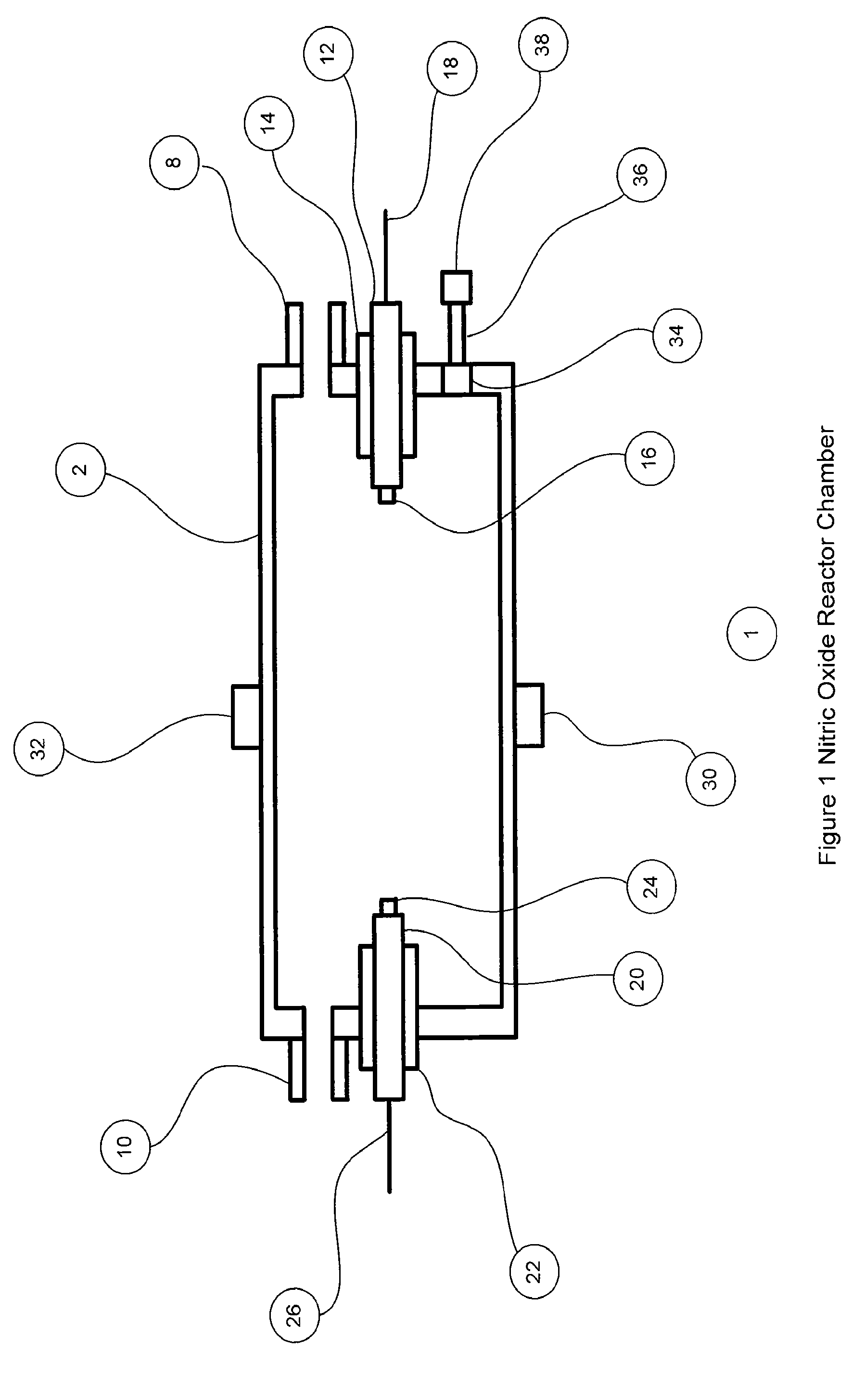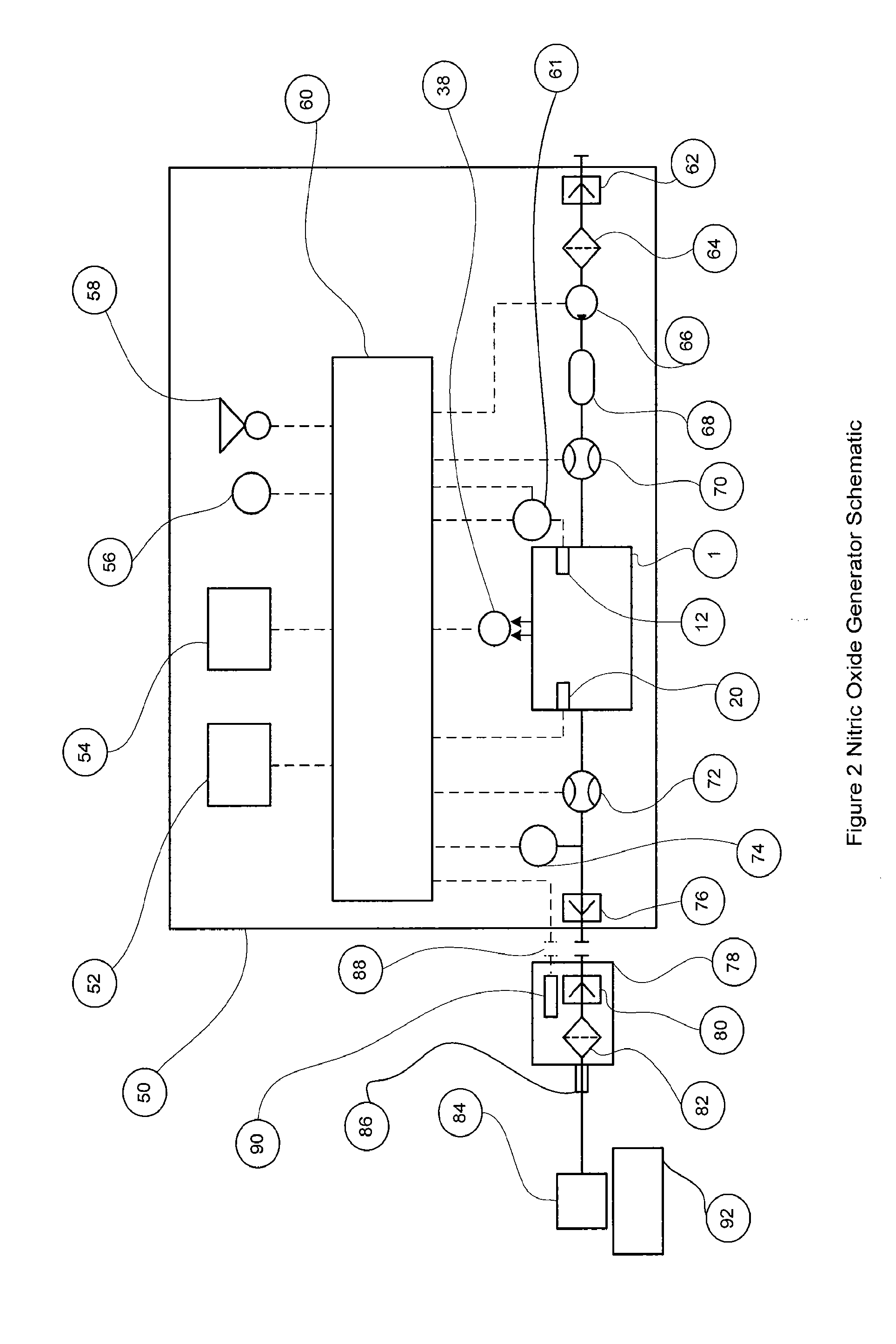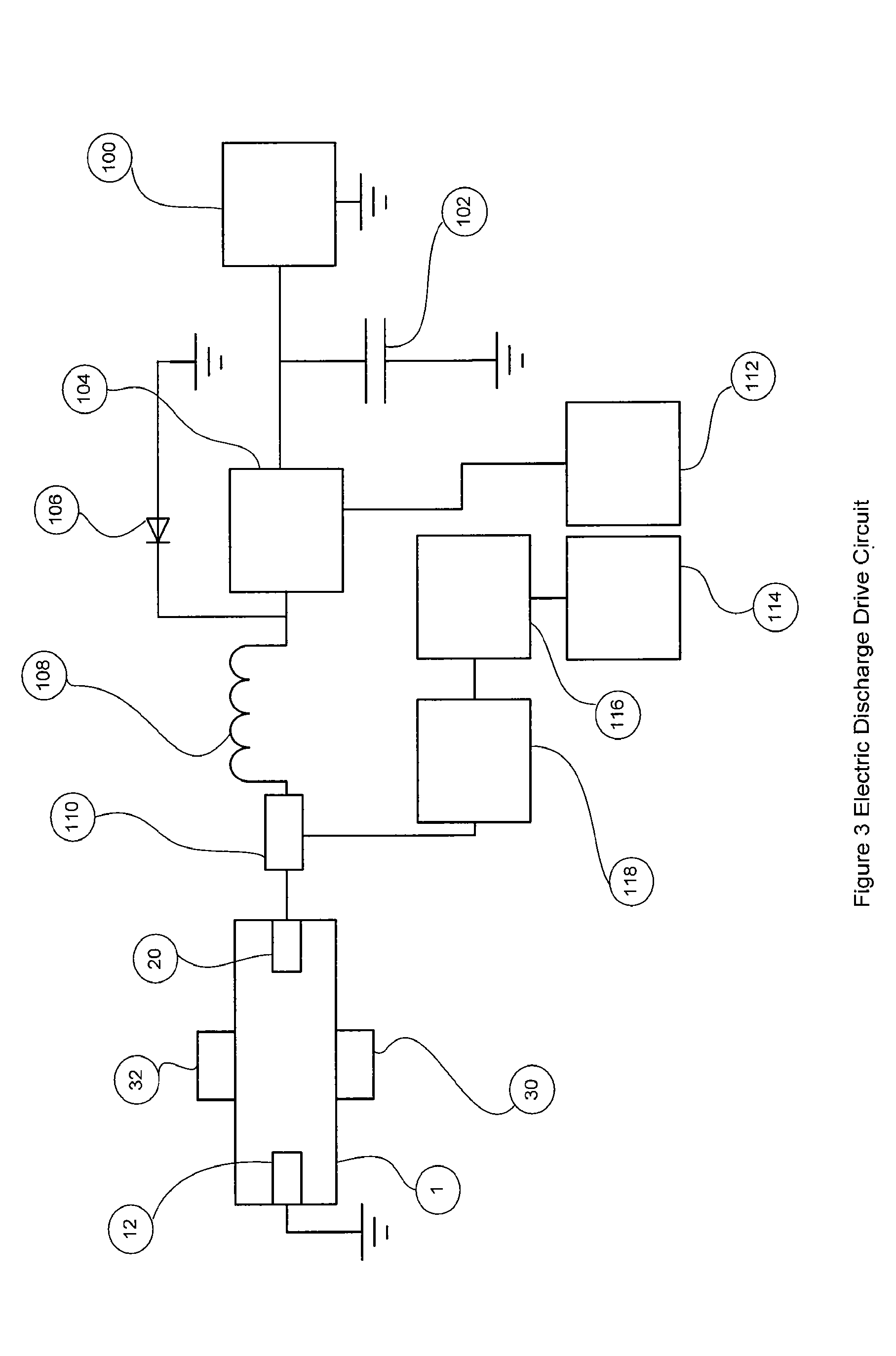Apparatus and method for generating nitric oxide in controlled and accurate amounts
a technology of nitric oxide and controlled amounts, applied in the direction of nitric oxide, disinfection, energy-based chemical/physical/physicochemical processes, etc., can solve the problems of large volume of compressed nitric oxide gas cylinders, high labor intensity, and high labor intensity, so as to achieve effective removal of adulterants and accurate representation of the remaining capacity. , the effect of high level of adulterants
- Summary
- Abstract
- Description
- Claims
- Application Information
AI Technical Summary
Benefits of technology
Problems solved by technology
Method used
Image
Examples
Embodiment Construction
[0065]In the following detailed description the term “air” will be used to generally describe the oxygen and nitrogen gas mixture used in reactor chamber to generate nitric oxide, but also other gas mixtures containing oxygen and nitrogen that may have been produced from alternative gas sources such gas cylinders that are commonly used in anesthesia machines and may include alternate concentrations.
[0066]FIG. 1 shows the nitric oxide reactor chamber 1 with a reactor housing 2 which has a reactor gas inlet port 8 and a first electrode 12 on one side and a reactor gas outlet port 10 and a second electrode 20 on the other side. The electrodes can be insulated with non-electrically conducting material 14 and 22 if the chamber housing is made of a material that is electrically conducting. The electrodes can have an electrode tip 16 and 24 made of a material that is resistant to high temperatures and is less susceptible to vaporization, oxidization and wear. Materials for the electrode ti...
PUM
| Property | Measurement | Unit |
|---|---|---|
| Time | aaaaa | aaaaa |
| Time | aaaaa | aaaaa |
| Frequency | aaaaa | aaaaa |
Abstract
Description
Claims
Application Information
 Login to View More
Login to View More - R&D
- Intellectual Property
- Life Sciences
- Materials
- Tech Scout
- Unparalleled Data Quality
- Higher Quality Content
- 60% Fewer Hallucinations
Browse by: Latest US Patents, China's latest patents, Technical Efficacy Thesaurus, Application Domain, Technology Topic, Popular Technical Reports.
© 2025 PatSnap. All rights reserved.Legal|Privacy policy|Modern Slavery Act Transparency Statement|Sitemap|About US| Contact US: help@patsnap.com



